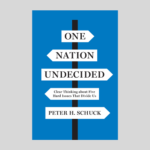Originally Published in The Huffington Post
If only we had political leadership worthy of our military. That’s the one sentence take away from my recent trip to Iraq and Afghanistan (under the auspices of the Council on Foreign Relations, headed by Max Boot, their senior defense analyst, two of their military fellows and about 10 DVs — military parlance for distinguished visitors).
I evaluated what I saw against the backdrop of my own sense of America’s vital interests in the region. These include, in rough order of importance:
1. Keeping Pakistan’s nuclear arsenal out of the hands of Islamic extremists;
2. Keeping Mid East oil flowing in present quantities or higher, in order to sustain global economic growth. This means keeping oil out of extremist hands, as well (i.e. folks who would like to see a collapse of the Western powers, and who if they sold us oil at all would recycle oil revenues into arms , rather than into financial assets);
3. Minimizing Iran’s regional influence, and ability to project power through proxies like Hezbollah;
4. Minimizing the ability of Al Qaeda to mount terrorist attacks on the US or its allies. (I put this fourth, incidentally, because Al Qaeda is, by all accounts, very weak; has strained relations with both the Taliban and the government of Pakistan; and in twenty years of violence has accomplished nothing remotely comparable to what the “Arab spring” has accomplished in Egypt and Tunisia by largely peaceful means.)
In Iraq, we are in the late stages of a virtually complete pullout of troops. We are meant to have only 150 remaining troops in the country by the end of the year, barely adequate to advise the Iraqi military on procurement issues. Today we have nearly 50,000 whose mission is to train and equip the Iraqi army and police. Top to bottom, they were superb. Even in the midst of a pull out, their morale was terrific, they were exceptionally thoughtful and well organized and fully embraced their mission to train, turn over military assets and depart.
Interestingly, our military has also succeeded in transmitting its value system and culture. We met General al-Abadi, a top Iraqi general who has great admiration for the U.S., and others in their military who seem to have embraced out ethos. We will be leaving behind a country with a reasonable shot at being able to maintain order domestically, but with no capability whatsoever to defend itself from external attack. (To dramatize the point, we did meet a very able Iraqi air force Captain, fully capable of training other pilots. He is the ONLY ONE such at the major training facility, perhaps the only one in Iraq. Maybe it doesn’t matter because they have no planes other than a handful of propeller driven trainers.)
On my vital interests list, Iraq scores high on two dimensions. First, it has the potential to become a huge factor in the oil market. We met their oil minister, who feels they can increase production from a current level of 2.2 million barrels/day to 10-12 million barrels daily over the next 5-10 years. I don’t believe that is credible, but neither is it impossible, and if achieved would make Iraq the worlds largest oil producer and would by itself satisfy around half of projected global increases in demand. To have this much oil in the hands of a reasonably stable, reasonably secular, reasonably democratic country (at least by the standards of the neighborhood), is no small achievement. Second, Iraq has historically been a geopolitical counterweight to Iran. A strong Iraqi military, supplemented by US bases in Iraq, would be an important deterrence to Iranian adventurism.
Unfortunately, we have done very little to secure our interests on either of those dimensions. After 8 years of an American presence, Iraq remains one of the most socialist countries in the world. Its government controls 85 percent of GNP. It produces (or is meant to) all the electricity, which is either stolen or sold a hugely subsidized prices. Naturally, the sector cannot compete for resources and power supply is highly erratic or non-existent. This in turn is a major driver of popular discontent. The Iraqi government, like socialist governments everywhere, does not begin to understand market incentives: in the oil context they are asking oil majors to provide technical services for rock bottom fees, but offering minimal incentives to provide the $100 billion plus of capital that will be required to produce to their potential. Moreover, American companies are marginalized in this process, and the field is being left to the Chinese and the French, among others.
On the military front, it seems perfectly clear that a substantial, continued US presence would serve our needs and theirs. But in a weird game of “After you, Alphonse” neither side has broached the topic of modifying the current Status of Forces Agreement (SOFA), which mandates the year-end pullout. Maybe something is going on behind the scenes on this dimension (it is obviously political dynamite for both President Obama and Prime Minister al-Maliki), but we picked up little hint of it. What we did learn was that time is very short; and if some kind of SOFA extension is not agreed by September, it will be a practical and logistical nightmare to change course.
Turning now to Afghanistan, it is clear we are deeply involved in “nation building” and are implementing the Petraeus playbook, embodied in his Counter Insurgency (COIN) Manual, which under his leadership has been embraced throughout our military as doctrine. These were the ideas he employed with great success in Iraq, and in the briefing we received from General Petraeus he gave a very full account of how they were playing out in Afghanistan.
Petraeus himself is enormously impressive, but not in the “physically commanding/big personality” mode of many military leaders. He clearly has the determination and sophistication to sell his ideas in Washington, as well as throughout his command. He is very thoughtful, low-key, and modest in demeanor — one who leads more by force of intellect than by force of personality. I was left with a reasonable conviction that our efforts would succeed in countering the Taliban insurgency, which is the objective President Obama set.
That said, the COIN manual, at least based on my perusal, seems to offer little sense of proportionality (i.e. how to modulate our response based on the capabilities of the insurgency). In Afghanistan, the Taliban has between one and two thousand fully committed and engaged members, supplemented in the spring/summer “fighting season” by 20,000 or so mostly illiterate farmers, who may be sympathetic to the ideology, but who join the fray to pick up some extra money or because they are coerced into doing so.
The COIN manual is extraordinarily comprehensive. It’s approach to insurgency starts with providing security to the population and training military and police, but extends to education, economic opportunity, rule of law and dispute resolution, and the creation and development of national and local governmental institutions. Subordinate to all of these is rounding up or killing insurgents.
But the latter efforts were hugely impressive. We visited the national command center for special operations, which stages multiple nighttime raids on known Taliban shelters every day. These raids are individually approved by the Afghan government, and are conducted with the participation of Afghan troops. Every operation was displayed in real time on a large monitor; and supported by an electronic chat room so all participants could communicate instantly. The coordination of human and electronic intelligence, from agencies as disparate as the CIA, FBI, DIA, NSA, plus Afghan and Pakistani sources is nothing short of phenomenal. The raids are supported by an incredible logistical, and communications structure, including female soldiers to question and search Taliban women, and full medical facilities in the event of casualties. Amazingly, 85 percent of the raids encounter no armed resistance at all, and most produce further actionable intelligence. With very little violence, special operations personnel are bringing in 10-20 Taliban a day, most of them “hard core”.
At the other extreme of efficacy was an operation we visited that is engaged in placing teams of a dozen or so soldiers in villages deemed to be of strategic importance. These village stabilization operations (VSOs) are meant to support local resistance to the Taliban, help settle disputes, encourage local schools and businesses, and administer cash for work programs. These efforts might be availing, though there is substantial risk that they are doing as much harm as good by stirring up tribal rivalries by inadvertently favoring certain tribes over others.
I was astonished to learn that an entire divisional effort — some 10,000 soldiers — is supporting just 35 VSO teams of 12 soldiers each, though, in fairness, many are involved in more populous urban areas. Nonetheless, I sensed a great disparity between the vast resources employed and somewhat problematic results achieved. Another troublesome aspect is the contrast between our military and civilian efforts. The military presence is spread throughout the country, and progress on virtually every dimension is tracked quantitatively. In contrast the overwhelming bulk of State Department personnel are in Kabul. Service in outlying districts seems like a career detour, and many of those in remote posts are “irregulars” hired on short term contracts.
The interplay between military resources and domestic political concerns was highlighted in a visit to a newly constructed detention facility that replaced the prison at Bagram in which detainees were previously held. Of course, the abuses at Abu Graib, and controversies swirling around Guantanamo were a major driver of domestic opposition to our war efforts. As commander , Gen. Petraeus took this very seriously indeed and appointed a three star admiral (one of only three 3-stars in the entire theater) to run the new facility.
Indeed, it is a model prison. Red Cross inspectors visit regularly and give it very high marks (though they refuse to publicize their visits). Inmates receive much better food and medical care than their Afghan guards do (a source of considerable resentment to the Afghans who are meant to take over the facility as soon as practicable.) All inmates receive literacy training and are eligible for vocational training and other educational opportunities.
A panel of three senior officers reviews the status of each detainee every 3 months, and recommends release, rehabilitation, or referral to Afghan courts for those considered least threatening. To make the latter work, we were proactive in establishing a criminal code and in recruiting and training judges, prosecutors and defense attorneys to handle the cases. Needless to say, progress has been slow. Essentially we are trying to create a first world criminal justice system in one of the poorest countries in the world, with less than 30 percent literacy at a third grade level. We would, of course, like to get out of the detention business as soon as we can, but while were are in it, the prison is staffed with roughly five times the personnel as would be needed in a similar facility in California.
First world institutions and standards often do not fit comfortably into third world countries. As an example, our military and State Department both have sizable anti-corruption task forces operating in Afghanistan, which is widely cited as among the most corrupt regimes in the world. But as Mark Sedwill, the very able NATO ambassador, put it, “one mans corruption, is another man’s patronage, is another man’s obligation.” We build cases against corrupt officials, but with rare exceptions, there is no follow through at the higher levels.
Our Ambassador, Karl Eikenberry, seems to have achieved the worst of all worlds: his public condemnation of the Karzai regime on corruption grounds has poisoned relations, but he has been unwilling to tackle the power brokers in the country who are the biggest beneficiaries and the strongest supporters of the regime. As one COIN adviser observed, the resources we have brought to Afghanistan have made corrupt practices far more lucrative than they have ever been, and have thus more deeply entrenched the very powers we are (feebly) attempting to reform.
Another example is the misfit between our ambitions for the Afghan military and police and Afghanistan’s economic capabilities. A central tenant of COIN is to build an Afghan capability to prevent Taliban from seizing control in any significant areas of the country. Our efforts are superbly well organized, and effective, especially considering that only 15 percent of recruits are literate at a third grade level. Our military leadership is fully committed to the project, and the key statistical indicators (e.g. desertion rates, e.g. Afghan-lead operations) seem to be moving in the right direction. That said, it’s hard to see an end-game here. If we succeed, and I think it’s likely we will, we will have created a military that will cost 6-8 billion annually to maintain. That is more than half the entire GDP of Afghanistan, and more than the entire global foreign aid budget of the United States.
All in all we have some 100,000 US troops committed to Afghanistan, and are likely to have spent between 400-500 billion dollars before we are (currently) meant to leave in 2014. Afghanistan will absorb 10 to 20 times the resources we will devote to Iraq and Pakistan combined. Interestingly Steffan de Mistura, Special Representative of the Secretary General in Afghanistan, approves our surge on the basis that it should convince the Taliban to reach a negotiated settlement.
But more broadly, how are our efforts justified in terms of US interests? It is perhaps true that a Taliban, which held sway over meaningful territory in Afghanistan and was seen as victorious over US power, would encourage Taliban elements in Pakistan. It is possible that they would offer more sanctuary to Al Qaeda than they now enjoy on the Pakistan side of the border. These are not the most compelling arguments; more persuasive to me is the sotto voce notion that US military bases in Afghanistan can serve as a strategically important, perhaps vital, base of operations to deal with whatever contingencies Iran and Pakistan present. Those are hardly threats that will vanish in 2014, and it’s entirely possible we have as little military presence in Afghanistan in 2015 as we are expecting to have in Iraq in 2012.
Our military is a superb national resource and among the most impressive institutions of any kind our society has produced. It is up to our civilian and political leadership to allocate that resource wisely. We are doing next to nothing to encourage opposition elements in Iran, withdrawing militarily from Iraq, and providing aid to Pakistan at a level of around $10 per capita… while engaging in an absolutely full scale, multi-year, nation building effort in a country with among the poorest natural and human resources of any in the world. How can this be the right way to secure our vital interests?




